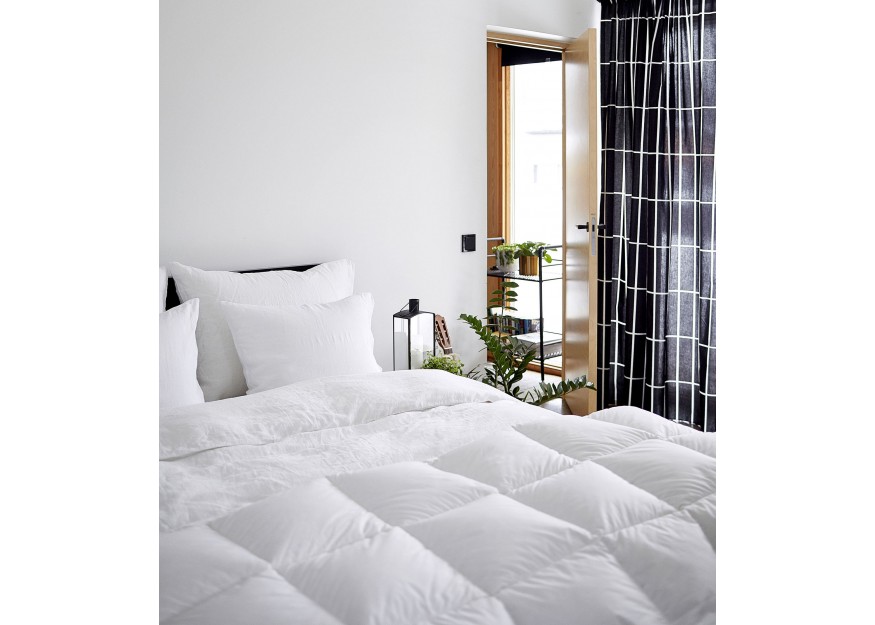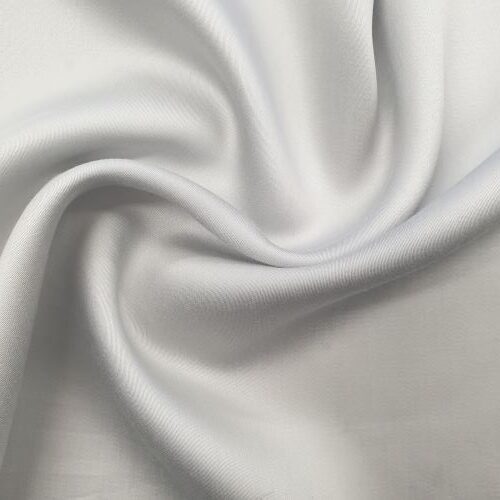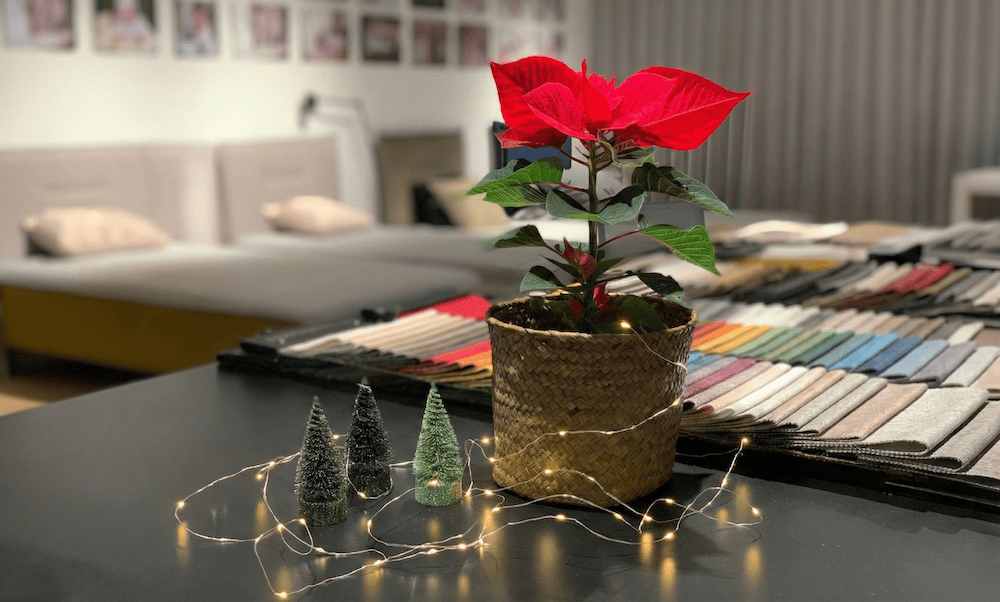FIND A DUVET THAT SUITS YOUR SLEEPING HABITS
You need to find a duvet that suits your sleeping habits. If you tend to toss and turn at night, sweat a lot or, on the contrary, feel cold, you need to take action.
EVEN THOUGH GOOD SLEEP HYGIENE PLAYS A PRIMARY ROLE IN RESTFUL SLEEP, SUITABLE DUVETS AND PILLOWS ALSO SHOULDN’T BE UNDERESTIMATED. TIPS FROM THE MAGAZINE NIPIRAAMAAT.
Text: LAURA VERTE. Photos: MANUFACTURERS, FREEPIK
We thank MARIA RAUDSEPP (SLEPT.EE) and ANU RAUN (TEXTELLE.EE)
The time when beds were covered only with cotton duvets or quilts is in the past. A constantly evolving technology has brought a variety of duvets made from different materials and with different properties to the stores. As buying a duvet is not a cheap pleasure, and your sleep is still the issue, choosing a duvet through trial and error is not a good idea. It’s better to do your research before going to the store to know whether you should stand in front of a shelf with cotton (or wool), silk, feather, bamboo, synthetic, or allergen-free duvets.
TO KNOW WHAT YOU ARE LOOKING FOR
To find the right duvet for you, first analyze your sleeping habits. This way, you will find nuances to consider when choosing a new duvet.
- Is your bedroom warm or cool?
- Is the room temperature consistent?
- Do you prefer a light or heavy duvet?
- Do you want to use different duvets for the summer and winter?
- Do you sweat during sleep? Or do you curl up to get warm?
- Does your partner have the same sleeping habits as you?
- Do you have dust or dust mite allergies?
NATURAL OR SYNTHETIC MATERIAL?
When choosing a duvet, consider it as a whole. Although the filling material largely determines the final verdict, the cover material is no less important—if it doesn’t let air through and isn’t pleasant against the skin, the good qualities of the filling will also not come to the fore. Therefore, make sure that the outer fabric contains cotton.
The filling material and origin of the duvet divide users into two main groups: although there are blends of materials, most people either prefer natural filling materials or specifically want synthetic fibers. The choice may be based on taste preferences, dust allergies, or the desire to avoid animal materials.
While some time ago, there might have been concerns about the stuffy discomfort and sweating under a synthetic duvet, now there are high-quality synthetic duvets with properties similar to natural materials. If you have no preferences for the material, you can make a choice from a very large selection.
DUVETS FOR ALLERGY SUFFERERS
Those sensitive to dust and allergies can get a good night’s sleep using special allergy-free mattresses, duvets, and pillows. These are designed for a hygienic sleeping environment and to prevent the development of dust mites. Products suitable for allergy sufferers are usually in a separate category in stores to make navigation easier.
Although products like Joutsen and Familon feather products are approved by the Finnish Allergy and Asthma Association for allergy sufferers, carefully review the product description of bedding and consider your own peculiarities in case of allergies.
DIFFERENT TYPES OF DUVETS
Feather duvet
+ Natural material
+ Warm option, especially suitable for those who feel cold as it provides and retains warmth
+ Regulates temperature very well—keeps warm during winter and cools during summer
+ Light and airy duvet
+ Removes excess moisture the body produces
+/- Duvets with cassette-type chambers maintain shape, and the duvet stays fluffy for a long time
– The fluffiest and most expensive ones are 100% down duvets. Cheaper feather duvets have a lower percentage of down compared to feathers, making the duvet heavier and less airy
– Cheaper options may rustle more
– Requires careful maintenance, so it is safer to trust it to professionals
Silk duvet
+ Cooling effect, suitable as a summer duvet
+ Breathable, skin-friendly, allergy-free
+ Luxurious, especially if the outer fabric is 100% silk
+ Natural material
+/- Lightweight duvet
+/- Maintenance requires duvet airing and gentle fluffing
– Both regular and dry cleaning can damage the properties and dimensions of the silk duvet
Synthetic duvet
+ Quality synthetic materials have properties similar to natural ones: they regulate heat, are hygienic, absorb moisture, etc.
+ An alternative for those who, for certain reasons (such as allergies), do not prefer natural fillings
+ Synthetic duvets are often easier to care for than duvets made of natural materials
+/- Artificial fibers are the most widely used material in duvet production
+/- The main filling material for synthetic duvets is usually polyester
+/- Lightweight duvet
– A duvet made of cheap synthetic material can be stuffy and cause sweating
TO HELP YOU DECIDE
Light or heavy? If you don’t know whether to choose a light and airy duvet or a heavy and thick one, choose a medium-thickness duvet. The same applies if you are choosing a duvet as a gift.
Warm or cool? If your partner prefers a warmer or cooler or lighter or heavier duvet than you, it’s better to sleep under separate duvets to get a good night’s sleep.
One duvet for winter and another for summer? There are also duvets with two duvets inside the cover, attached with snaps, where one can be removed for the summer.
What about children? When it comes to choosing a duvet for children, consider the same arguments as for adults. If a heat-loving child tends to push the duvet aside, a sleeping bag might help.
DUVETS NEED REGULAR CARE
Changing and washing bedding is a natural part of weekly household chores. Although it may be easy to forget, duvets and pillows should also be regularly cared for. Washing duvets should be done once or twice a year as instructed on the care label. This way, the duvet will withstand its lifespan nicely.
Although with a washing machine of sufficient size duvets and pillows can be cared for at home, it’s safer to take them to a laundromat with washing and drying conditions suitable for each material and size. The latter is a crucial part of successful cleaning so that the duvet wouldn’t become musty in the inside. Drying the duvet requires a lot of space and time. To speed up drying the duvet at home, fluffing it a bit helps, but that doesn’t make a big difference.
HELP FROM THE SUN AND AIR
The least you can do at home and the easiest way to care for a duvet is to regularly air and fluff it outdoors. Beating the duvet and airing it for a few minutes in the sun once a week cleans and refreshes the duvet and pillows noticeably. You’re also doing yourself and your bed, duvets, and pillows a favor by, instead of making the bed immediately as the first thing in the morning, opening the windows in your bedroom and letting your bedding breathe for at least half an hour. Then make the bed and cover it with a bedspread.
Storage should ensure that the temperature is dry and doesn’t drop too much to cause moisture and mold, especially during winter in a summer cottage or country house.




